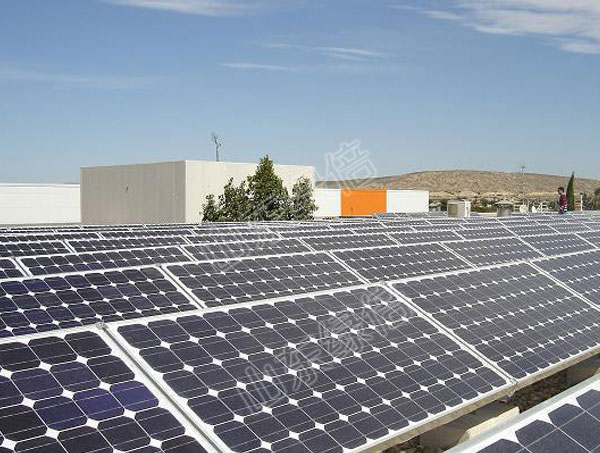Solar Equipment:Monocrystalline Silicon And Polycrystalline Silicon Solar Cells
Label:
Solar Equipment
Monocrystalline silicon solar
Polycrystalline silicon solar
solar panels
Monocrystalline silicon solar cells are solar cells that use high-purity monocrystalline silicon rods as raw materials. They are currently the fastest developed type of solar cells. Its structure and production process have been finalized, and the product has been widely used in space and ground.

Polycrystalline silicon solar cells are a new generation of cells that combine the high conversion efficiency and long life of monocrystalline silicon cells with the relatively simplified material preparation process of amorphous silicon thin film cells. Its conversion efficiency is generally about 17-18%, which is slightly lower than that of single-crystalline silicon solar cells. Crystalline silicon solar cells have no obvious efficiency degradation problem and can be produced on cheap substrate materials. Their cost is much lower than that of monocrystalline silicon cells and their efficiency is higher than that of amorphous silicon thin film cells.
Simply put, the Solar Equipment difference between monocrystalline silicon and polycrystalline silicon lies in their atomic structure arrangement. Single crystal is arranged in an orderly manner, while polycrystalline is arranged in a disordered manner. This is mainly determined by their processing technology. Polycrystalline is mostly produced by casting method. , which means directly pouring silicon material into a crucible to melt and shape, while single crystal adopts Siemens method to improve Czochralski. The Czochralski process is a process of reorganization of atomic structure. To our naked eyes, the surface of monocrystalline silicon looks the same, while the surface of polycrystalline silicon looks like there are a lot of broken glass inside, making it sparkly.
Main Difference
1. Price: Compared with polycrystalline solar panels for sale, the cost of monocrystalline solar panels for sale is relatively high. You should conduct a careful cost-benefit analysis and determine your budget to make the right choice for you.
2. Efficiency: One of the main advantages of monocrystalline solar panels is their high efficiency. These products are made from high-quality silicone with a single-crystal structure. Therefore, the resistance of current flow in these cells is minimal. On the other hand, while one of the advantages of polycrystalline solar panels is their lower price, they are also less efficient (between 14% and 16%) due to reduced silicon purity.
3.Lifespan: When you compare the initial installation costs between monocrystalline and polycrystalline solar panels, you should also look at the average lifespan of each type of panel. Monocrystalline solar panel manufacturers typically offer a 25-year warranty because the product lasts longer. Polycrystalline solar panels do not differ much in this lifetime parameter, but the warranty period provided by the manufacturer may vary.
4.Temperature coefficient: In warm weather, monocrystalline solar panels can provide higher efficiency due to their higher temperature coefficient. As the temperature increases, the output degradation of monocrystalline panels is lower. If you live in an area with longer, warmer summers, you should carefully consider the temperature coefficient of the solar panels you choose.
5.Appearance: The beautiful appearance of Solar Panels depends on the individual's personal aesthetic sense. But many users find that polysilicon's speckled blue tint is less easy on the eyes. Therefore, they may prefer monocrystalline solar panels as they find them more uniform in appearance and therefore aesthetically preferable.